| December 27, 2011 | Volume 07 Issue 48 |
|
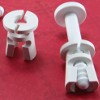 | New ‘pin and keeper' quick-assembly
sign fastening system
The Micro Plastics sign fastener is designed for rapid assembly and disassembly of a sign or other panel to its support structure. The reusable fastener was designed to fit a hole diameter of 5/16 in. to 3/8 in. (8 mm to 9.5 mm) and can be used to fasten two pieces together with total panel thickness from 1 in. to 1.64 in. (25.4 mm to 41.6 mm). Simply squeeze the keeper together and slide onto the pin, then release the keeper. Molded from impact-resistant and UV-stabilized nylon 6/6, the sign fastener is designed to withstand the elements in outdoor applications.
Click here for more information |
| | Videos+: Technologies and inspiration in action | Rube Goldberg-inspired Time Machine breaks Guinness World Record
This spring, the 2011 Purdue University Rube Goldberg machine shattered the world record for most steps ever successfully completed by such a contraption. In 244 steps, the "Time Machine" traces the history of the world from Big Bang to the Apocalypse. Along the way, the world is humorously destroyed by a meteor, an ice age, the Great Flood, world war, and alien invasion. All of this happens in order for the competition apparatus to complete its assigned, everyday task of watering a flower. [Purdue University photo: Mark Simons]
View the video |
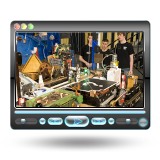 |
U.K. engineers fly world's first ‘printed' aircraft
Engineers at the University of Southampton have designed and flown the world's first ‘printed' aircraft. The SULSA (Southampton University Laser Sintered Aircraft) plane is an unmanned air vehicle (UAV) with an entire structure that has been printed, including wings, integral control surfaces, and access hatches. It was printed on an EOS EOSINT P730 nylon laser-sintering machine, which fabricates plastic or metal objects by building up the item layer by layer. No fasteners were used, and all equipment was attached using snap-fit techniques. The whole electric-powered aircraft can be put together without tools in minutes. Wingspan is 2 m. Top speed is nearly 100 mph.
View the video |
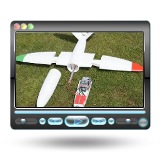 |
BigDog is back! And it's bigger and badder
The AlphaDog Proto is a lab prototype for the Legged Squad Support System, a robot being developed by Boston Dynamics with funding from DARPA and the U.S. Marine Corps. AlphaDog is designed to be 10x quieter than our favorite BigDog robot that caused such a sensation back in 2008. When fully developed, the system will carry 400 lb of payload on 20-mile missions in rough terrain. The first version of the complete robot will be finished in 2012. This video shows the robot powered remotely and early results from the control development process. The field version of AlphaDog will have a head packed with terrain sensors.
View the video
NEW! PETMAN bi-ped update video – an extra BONUS treat |
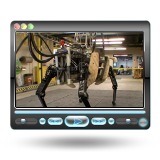 |
Space shuttle cockpit in 360°
If you haven't taken the time to check out the 360° pan-and-zoom tour of the Space Shuttle Discovery to celebrate the end of the shuttle program, there is no time like the present. A reader sent this in and asked if we could spot the creative use of duct tape in the cabin. It takes a good bit of noodling around to find it.
View the tour |
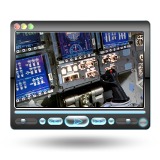 |
Australian students develop death-defying two-wheel vehicle
Students and researchers in the School of Mechanical Engineering at the University of Adelaide have developed a novel electric two-wheel vehicle, affectionately known as EDWARD (Electric Di-wheel With Active Rotation Damping), that allows a driver to travel in a conventional upright position and, for the more adventurous, in an upside down position. The di-wheel consists of two large coaxial wheels that completely encompass an inner frame containing a driver. The inner frame is suspended within the wheels in such a way as to allow the inner frame to rotate freely. EDWARD employs the latest drive-by-wire technology (used in modern aircraft) and control theory to aid the driver in piloting the vehicle.
View video 1 (Development details)
View video 2 (News report) |
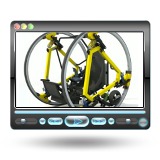 |
Volvo designers crash-test inboard boat engine
Late last year, Volvo Penta crash-tested a new system that separates its high-end Inboard Performance System (IPS) drive (featuring forward-facing propellers and installed in a hole through the hull) cleanly and safely from the hull of a boat should the vessel run aground or the drive smashes into something under water. To ensure that the calculated simulations were correct, engineers conducted tests on the same kind of crash track used to test cars and trucks. The part of the boat with the IPS drive was fitted on a 10-ton vehicle that was driven into an obstacle at 30 km/h (17 mph). The tests were filmed using a high-speed camera, the collision forces were measured, and the smash-up proved that the designers' computer simulations were an almost exact match for the results of the physical crash tests. Wham.
View the video |
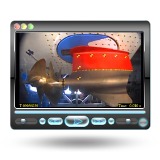 |
'Cinder blocks' made from recycled paper boast advantages
It looks similar to an ordinary cinder block, but it is only a third of the weight and just as strong. Plus, it does not crack like concrete or splinter like wood, because it is made from recycled newspapers, phone books, and lottery tickets. Zach Rabon, a 1999 graduate of Texas Tech University with a degree in ecology and conservation of natural resources, is president and founder of MasonGreenstar, an alternative building company that produces a patented product called Greenstar Blox. Blox are jagged and porous, but when stacked and adhered with mortar, the walls act as insulation that is energy efficient, fire resistant, and remarkably strong. See the Lubbock construction site and learn more about the testing process.
View the video |
 |
Ford Escape hybrid-taxi battery teardown
Pax Maguire, a high-voltage battery technical expert at Ford, describes a battery teardown after 230,000 hard-driving, New York City taxi miles. The battery profiled, which has a very low self-discharge rate, still has over 85% of its beginning-of-life discharge power capability. All 50 modules (250 cells) were found to be at about the same state of charge, even after almost a quarter of a million miles. You can also find out more about the next generation of battery technologies in development at Ford.
View the video |
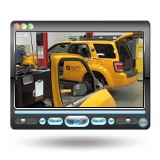 |
World's fastest bipedal robot
With the aim of creating the most realistic, human-like running achieved by a two-footed robot with knees, University of Michigan researchers have developed the 143-lb (65 kg) MABEL, whose pretty-smooth gait tops out at 6.8 mph (3.06 m/s). It's quite hypnotizing to watch, even though the machine doesn't hit full speed in this clip and the clanking and tether sure take away from its stealth. Be sure to read all about the machine's design in the info box under the video.
View the video |
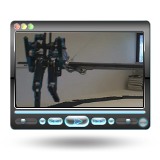 |
PTC Creo helps repair Huey helicopters in Afghanistan
Troy Moser is a laptop-wielding project engineer for an action team that helps repair U.S. military helicopters in the field. Find out more about how he and his crew use Creo software on the fly to work with original design data and help fix and upgrade aircraft in Afghanistan and Iraq.
View the video |
 |
|
|